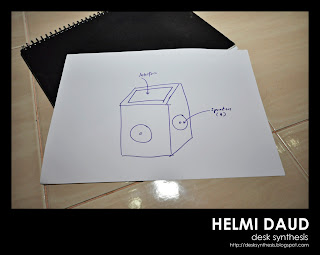Hi guys, please help to answer this suvery. Thanks :)
http://www.surveymonkey.com/s/JV9ZG7L
Thursday, December 2, 2010
Research & Analysis
Project Title
Desk Synthesis
In this project, the focus will be more in experimental on human interaction and music. To change the old way of playing music instrument that lacks of interaction and enjoyment. This project aims to change the new way of playing music instrument in full of interaction and applying the latest music technology, graphics and computer vision.
History
The first electric synthesizer was invented in 1876 by Elisha Gray, who is best known for his development of a telephone prototype. In 1920s, Arseny Avraamov developed various systems of graphic sonic art. The Hammond Novachord was an early but unsuccessful harbinger of synth technology in the 1930s-40s. Robert Moog introduced the first commercially available modern synthesizer in the 1960s. In the 1970s the development of miniaturized solid-state components allowed synthesizers to become self-contained, portable instruments. By the early 1980s companies were selling compact, modestly priced synthesizers to the public. This, along with the development of Musical Instrument Digital Interface (MIDI), made it easier to integrate and synchronize synthesizers and other electronic instruments for use in musical composition. In the 1990s synthesizers began to appear as computer software, known as software synthesizers.
The synthesizer had a considerable impact on 20th century music. Micky Dolenz of The Monkees bought one of the first Moog synthesizers. The band was the first to release an album featuring a Moog with Pisces, Aquarius, Capricorn & Jones Ltd. in 1967. It reached #1 on the charts. A few months later, the title track of the Doors' 1967 album Strange Days would also feature a Moog, played by Paul Beaver. Walter (later Wendy) Carlos's Switched-On Bach (1968), recorded using Moog synthesizers, also influenced numerous musicians of that era and is one of the most popular recordings of classical music ever made. The sound of the Moog also reached the mass market with The Beatles' Abbey Road and Simon and Garfunkel's Bridge over Troubled Water in 1969, and hundreds of other popular recordings subsequently used synthesizers. Electronic music albums by Beaver and Krause, Tonto's Expanding Head Band, The United States of America and White Noise reached a sizeable cult audience and progressive rock musicians such as Richard Wright of Pink Floyd and Rick Wakeman of Yes were soon using the new portable synthesizers extensively. Other early users included Emerson, Lake & Palmer's Keith Emerson, Pete Townshend and The Crazy World of Arthur Brown's Vincent Crane.
Synthesizer Component
Target Group
Teenager (15-20 years old)
Young adult (21-27 years old)
People who loves music (casual music lovers)
People who are just starting to explore the world of music and sound generation
Software & Hardware
Camera input (web cam, camera dv & security cameras)
Computer
Paper or something (to display the markers)
reacTIVision & Make Markers
Client applications
Java
Specially Designed
For nightclub, studio & attraction places.
Why these places?
Club, studio & attraction places; from the observation, the population of people going to these places are teenagers and young adults. If I put the desk synthesis in the attraction places like shopping malls, they will be attracted to the sounds produced, usually among the young music lovers. While in the club, DJ uses these tools to produce their sound to be presented to the public.
Precedence Studies
From this link Synthesizer, image attached below are the differences.
This is beardyman, he is UK Beatbox 2006/2007 Champion. He's using synthesizer for his performances.
SoundTable for Ipad
The soundTable is the new amazing application to make music by senses:
Look for the best loops and the most suitable effects.
Get and move the objects by your fingers.
Listen the sounds through headphones or speakers.
Easy to use with a clean and simple interface, the soundTable allows you to make musics as never before.
Features
Move objects; adjust frequency, tempo and amplitude.
Sync loops with a single tap.
Link cascade filters.
Record your sessions and layouts.
Enjoy.
Tips
You can sync loops start/pause by dragging one cover and placing a tap on it.
If you sync to a playing loop, your playback will change status when the other one crosses the zero or when you pause it.Tap on tempo control, while in pause, will reset it to 1.00.
Tap on mixer will pause everything, so, if you will face with a big freezing maybe you hit the mixer.
References
http://www.youtube.com/user/beardyman
http://www.korg.com/
http://lorentrogers.wordpress.com/2010/03/26/how-to-get-started-with-reavtivision/#more-438
http://en.wikipedia.org/wiki/Synthesizer
http://www.reactable.com/
Subscribe to:
Posts (Atom)




















